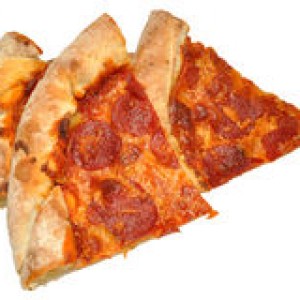News
Nestlé studies the neuroscience of ‘dietary restraint’
2 Jun 2015A new study from the Nestlé Research Center (NRC) in collaboration with the Vaudois University Hospital Centre, University of Lausanne (CHUV) in Switzerland provides further evidence that ‘dietary control’ based on motivational and attentional processes in the brain play a key role in portion size choice. Study leader Dr Julie Hudry suggests that those who overeat or ‘emotional […]

 A new study from the Nestlé Research Center (NRC) in collaboration with the Vaudois University Hospital Centre, University of Lausanne (CHUV) in Switzerland provides further evidence that ‘dietary control’ based on motivational and attentional processes in the brain play a key role in portion size choice.
A new study from the Nestlé Research Center (NRC) in collaboration with the Vaudois University Hospital Centre, University of Lausanne (CHUV) in Switzerland provides further evidence that ‘dietary control’ based on motivational and attentional processes in the brain play a key role in portion size choice.
Study leader Dr Julie Hudry suggests that those who overeat or ‘emotional eaters’ (whose consumption is triggered by anxiety, sadness or loneliness) may lack such control, but that education could help these groups.
In the research, normal weight women were asked to look at photos of the same dish in varying sizes (from small to large) and select the ‘ideal’ portion size “to stop feeling hungry until an evening meal”.
Using neuroimaging, the scientists documented the greater excitement that the women experienced in the “visual, salience and reward” regions of the brain when they first saw pictures of portions they subsequently judged to be ‘too big’, versus the portions that they judged to be ‘too small’ or ‘ideal’.
Hudry said her team’s study is the first to provide evidence that activity in different parts of the brain, involved with attention and adaptive behaviour, quickly succeeded these reward-related reactions.
Brain activity was ultimately highest in the regions involved with attention and adaptive behaviour for the portions that the women decided were ideally sized, suggesting that they exercised dietary restraint when making their choices, balancing energetic needs against the desire to control intake.
“We found two mechanisms working in parallel,” said Hudry. “One involved more in counting – how much food is present, how many calories and possibly how much reward. The second is this regulatory mechanism – judging what amount is appropriate for me to feel full until the next meal.”
“What we don’t know is if this second mechanism is disrupted somehow in people who tend to overeat,” she added. “Communication around this regulatory mechanism is something that could help people to control their hunger.”
According to Nestlé, research consistently shows that when larger portions of food are served, people eat more, so unconscious choices regarding portion size may be to blame.
Lisa Edelson, another NRC scientist who conducts research in this area, said that some people seem to be unaware that they are serving, let alone eating, unduly large portions.
She describes one NRC study where the amount of food parents estimated that they served their children was substantially different than what scientists later saw them serve in a lab. Portioning out ‘amorphous’ foods that are hard to count or quantify, apple sauce, for instance, may be particularly difficult.
Edelson also identifies ‘mindless eating’ as another contributor to over consumption. Snacks can be treats eaten for pleasure, not for satiety, Nestlé notes, but they still contribute to overall calorie intake which, in the long-term, can lead to weight gain.
Edelson recommends encouraging people to serve only the amount they would like to eat in one sitting onto a plate, then to put the pack away. Even the small amount of effort required to fetch more food from the kitchen can make you consider whether you actually want it, she adds.
Research indicates the difference that education can make in choosing the correct portion size. It’s why Nestlé says it has made a voluntary commitment to provide portion guidance on all children’s and family products by the end of 2015 to support portion decisions at the point-of-sale and moment of use.
The company is also developing new tools and new types of packaging to help educate people about what constitutes an appropriate portion size, and to help them select it.
Dietician Lisa Young from New York University helped Nestlé USA develop the Nestlé Pizza Portion Guide to help people eat a healthier diet without necessarily making certain foods off limits.
The guide treats pizza as a ‘mixed dish’ that combines several food groups in one slice – grains in the crust, calcium-rich dairy, vegetables and protein. It advises filling half your plate with additional vegetables and fruits to eat alongside the pizza, and moderating how much of it you eat to ensure your daily sodium intake is consistent with dietary recommendations.
In Canada, Nestlé has partitioned a 45 gram box of Smarties into three parts, with 15 Smarties containing 70 calories in total in each portion. The aim is to cause a “physical disruption to your eating pattern, to make you think before you overdo it”, given evidence of confusion among some Canadian consumers over what constitutes an appropriate portion size.
While education around portion sizes and a linked focus on packaging design is vital, cutting sugar, fat and salt levels in certain foods can make the same-sized portion more appropriate, and adopting both strategies will deliver healthier and more satisfying choices to the consumer, Nestlé believes..
Nestlé has made a series of commitments in this area on top of the work its researchers are doing to examine how smaller portion sizes can still satisfy consumers.
